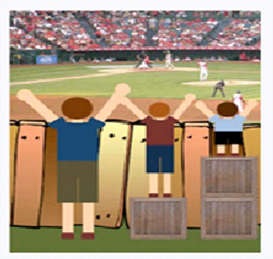GENDER EQUALITY AND SOCIAL INCLUSION (GESI)
Introduction
- INTRODUCTION
1.1 GENDER
- Socially constructed roles, relationships, responsibilities status and privileges assigned to men, women, boys and girls in a given culture or location.
- Learnt through the socialization process. Males’ and females’ roles, behaviours, attitudes and responsibilities are encouraged through a process called socialisation. This means that society determines how females and males will grow up, and the roles and responsibilities they are expected to perform.
- Gender relations are dynamic, changeable, and vary from culture to culture
- The concept of gender refers to the roles and characteristics of women and men, and to the relations of power between them.
- Therefore, “gender” does not refer simply to women, but to the relationship between women and men, and the way it is socially constructed.
- Gender is not a women’s issue. It is not to blame men. It is a concept which makes both men and women happy together. “Husband and wife as a management unit”
1.2 GENDER EQUITY
- Being fair and socially just and impartial through fair distribution of resources and benefits
- A stage or process to equality

Gender Equity
1.3 GENDER EQUALITY
- Having the same status, rights and responsibilities for men and women
- Based on the fact that no individual should be less privileged in opportunities and rights
- Involves identification and removal of underlying causes of discrimination to give everyone chance

Gender Equality
1.4 GENDER BLINDNESS
- Lack of recognition of women and men needs
- Failure to recognize that gender relations are determinants of life choices available between men, women, boy and girls
1.5 GENDER SENSITIVITY
- To be aware of the difference between men and women needs, roles, responsibilities and constraints and being able to take action to address them.
- Means taking into consideration the impact of policies, legislation programmes on women, boy, men and girls
1.6 SOCIAL INCLUSION
- Social inclusion ensures that all groups and communities, including women, men, youth and people with disabilities have equal access to and control over development resources, equal opportunity to participate in the decision-making process, and can benefit equally from development programs.
- Social inclusion is about providing more options for marginalized groups for their well-being.
- Seeks to address inequality and/or exclusion of vulnerable populations by improving terms of participation in society and enhancing opportunities, access to resources, voice and respect for human rights. It seeks to promote empowerment and advance peaceful and inclusive societies and institutions.
1.7 GENDER ANALYSIS
- GESI analysis is an analytical approach that helps identify, understand and explain the gaps and disparities based on gender inequalities and social exclusion.
- A GESI analysis can be used to raise questions, analyse and report information, and develop strategies necessary to increase gender equality and social inclusions.
- Completing a GESI analysis helps to uncover the social norms, beliefs, practices, and attitudes underlying the differences in individuals’ needs, constraints, and opportunities
2. DIFFERENCES BETWEEN GENDER AND SEX
THE SHOOTER IN THE HOMESTEAD
One night the owner of the house heard the barking of dogs and opened the bedroom window, only to see a person tip-toeing from the main gate into the yard. At that moment, the owner of the house instinctively took a gun and shot the person dead. Upon seeing the dead person, the killer cried, “I have shot my own child!”, and turned the gun, pulled the trigger, and dropped to the ground, dead! It happened that at the moment of the sad incident, the child was coming back home after sneaking out of the house to see a friend.
Discuss the following:
Assuming you were the guard of the house and was asked by the Police to give a witness statement, how would you describe the incident? For example:
- Who was the killer?
- How was the killer related to the victim?
- What was the sex of the killer?
- What was the sex of the victim?
- What was the motive of the killer in shooting the person?
- Why did the victim come into the yard at night?
Ask two or three more people to add or subtract from the original statement. [Watch the statements used to describe the two people. More likely, most will indicate that both the killer and the victim were men, probably father and son]
Sex Roles
Sex Roles are biologically determined roles that are based on sex. They are based on the sex of an individual either male or female. For example, a female’s sex role of child bearing and male’s sex role of impregnating cannot be changed.
Gender Roles
Gender roles refer to “behaviors, tasks and responsibilities that a society considers appropriate for men, women, boys and girls”. Culture defines roles and responsibilities to which women and men are socialized to conform. For example, in Chikwawa it is the role of a man to cut grass while in Mzimba this is done by women. Gender roles are also affected by age, class, religion, ethnicity and historic trends, technology, economy, HIV and AIDS, education, political environment, among others.
A GAME ON GENDER AND SEX
|
STATEMENT |
SEX |
GENDER |
|
|
1 |
Women give birth, and men do not |
* |
|
|
2 |
Little girls are gentle and timid; little boys are tough and adventurous |
|
* |
|
3 |
Women cook and clean the house; men earn income through jobs outside the home |
|
* |
|
4 |
Boys’ voices break at puberty, and girls’ do not |
* |
|
|
5 |
Women can breast-feed babies, and men cannot |
* |
|
|
6 |
Women are in charge of raising children |
|
* |
|
7 |
Men are decision makers |
|
* |
|
8 |
Men make decisions about family planning and the number of children a couple will have |
|
* |
